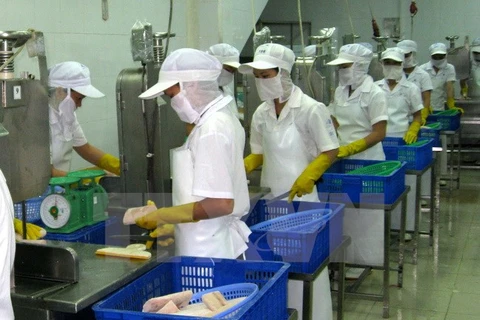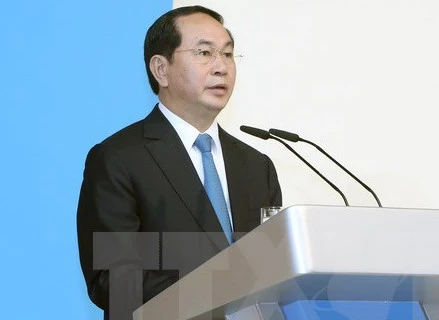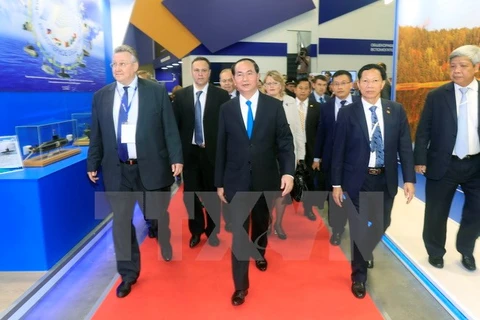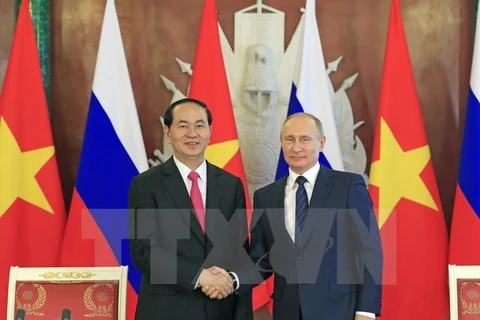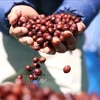Hanoi (VNA) - Vietnamese businesses should be aware of the potentially huge pitfalls of trading with the Eurasian Economic Union (EAEU), and the importance of tackling these together, experts said at a recent conference.
Representatives from the Ministry of Industry and Trade (MoIT) emphasised at the conference that Vietnam’s producers and exporters must be aware of both the pros and cons of conducting trade with the Eurasian Economic Union (EAEU).
The conference was held to mark one year of the Vietnam-Eurasia Economic Union Free Trade Agreement (VN-EAEU FTA).
Ngo Chung Khanh, Deputy Director of the MoIT’s Multilateral Trade Policy Department, said that his chief concern was the trigger safeguard measure within the EAEU in the textile and furniture industries and its effect on Vietnamese exports to this market.
He asked Vietnamese textile exporters to be extremely careful of this safeguard mechanism, and only allow a limited number of consignments to be shipped out to the EAEU each year. He warned that should one company break the rule, all will suffer the consequences.
Khanh explained that even though the EAEU had agreed at the start of negotiations to bring tariffs down to zero percent with no rule of origins requirement for thread or fabric, as in other FTAs that require the whole product to be made in Vietnam from scratch, the bloc was not in total favour of opening its textile market to Vietnamese goods.
As such, they apply a trigger mechanism that takes effect if the total export turnover from Vietnamese producers to the EAEU grows to twice the average volume that Vietnam has exported to the region over the last three years.
If Vietnam’s textile export exceeds this volume, the EAEU will conduct an investigation to decide whether to apply tariffs of 20 percent instead of zero percent.
Khanh also stressed the importance of following the rules set by the VN-EAEU FTA, one of which is the prohibition on dividing shipping consignments between different countries.
This means for a shipping container to be subjected to the zero percent tariff treatment, it must be shipped directly and wholly from Vietnam to an EAEU member, even if it belongs to a multinational company with factories in many countries.
The EAEU has also made it clear that should any company forge a certificate of goods origin, the entire industry may be forbidden from exporting to their market.
"Altogether, these risks mean that Vietnamese producers in all fields must band together to ensure their rights and benefits, as well as the benefits to the sector as a whole," said Khanh.
Duong Quoc Thanh, partner at the DIMAC Independent Law Firm, said that EAEU member countries, especially Russia, are concerned about the consistency of Vietnamese products’ quality, so businesses should keep this in mind and respond accordingly.
With the EAEU’s rising influence, Vietnamese firms are gaining market share in this region through the signing of the VN-EAEU FTA in October 2016.
Along with other FTAs, it elevated Vietnam’s status among East Asian countries, as the country was the first in the ASEAN community to sign an FTA with the EAEU.
In addition to favourable conditions for the fabric, textile and garment industry, the VN-EAEU FTA also brings up to 90 percent tariff reductions for other export sectors like seafood, footwear, handbags and suitcases.
The conference was jointly organised by the Hanoi Centre for Small and Medium Enterprises Support, Hanoi Department of Planning and Investment under the Department of Planning and Investment and the Hanoi Supporting Industries Business Association (HANSIBA).-VNA
VNA

